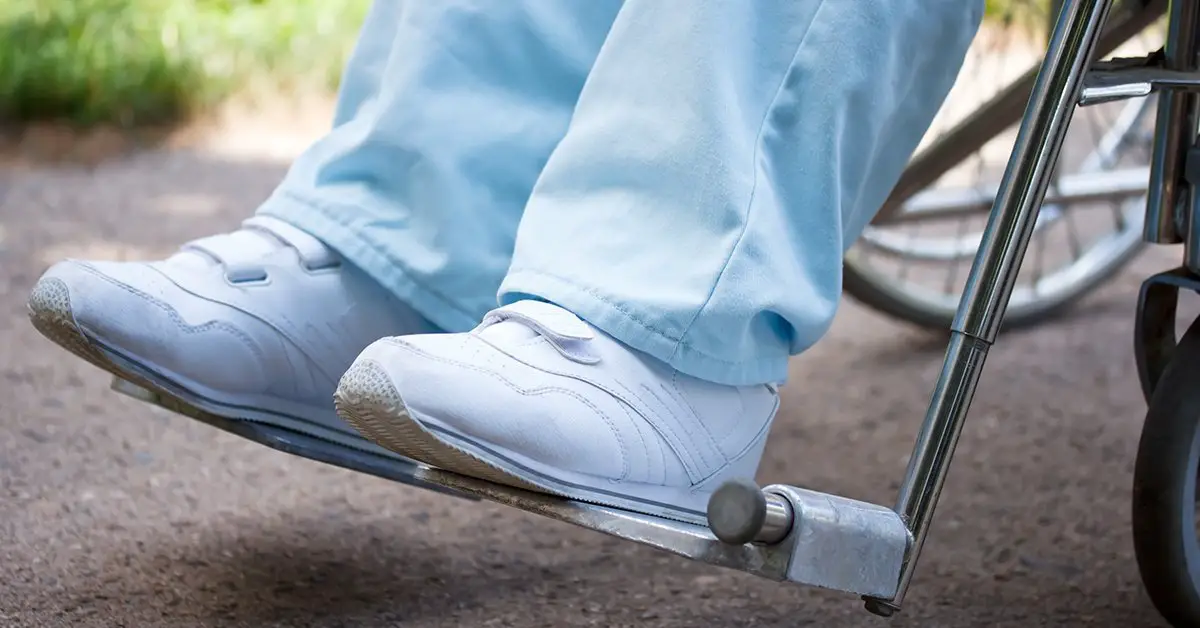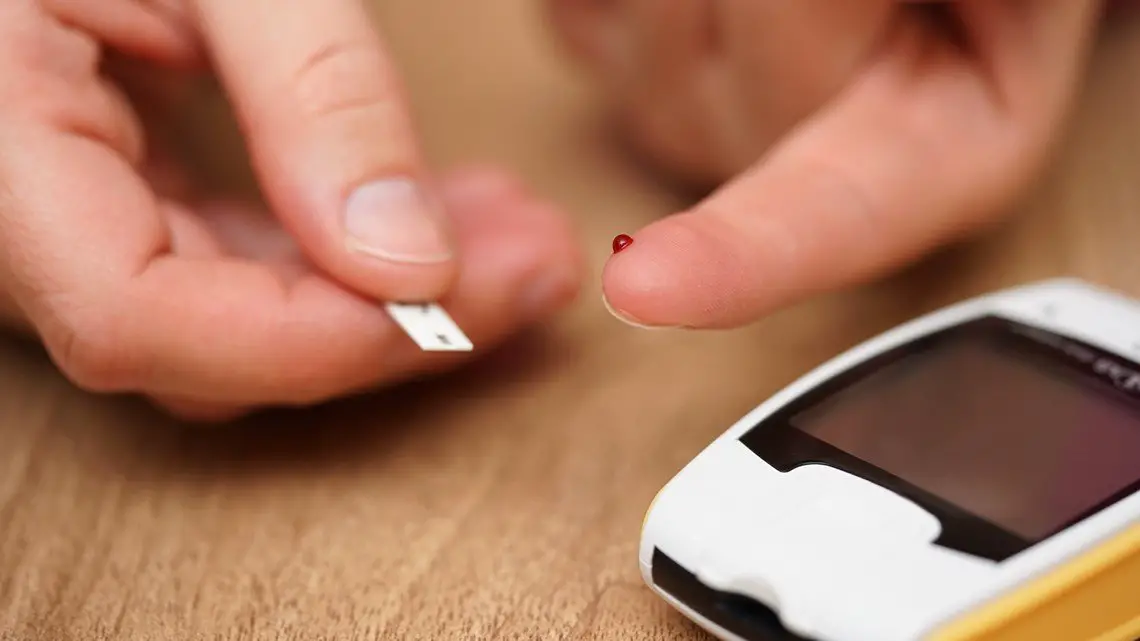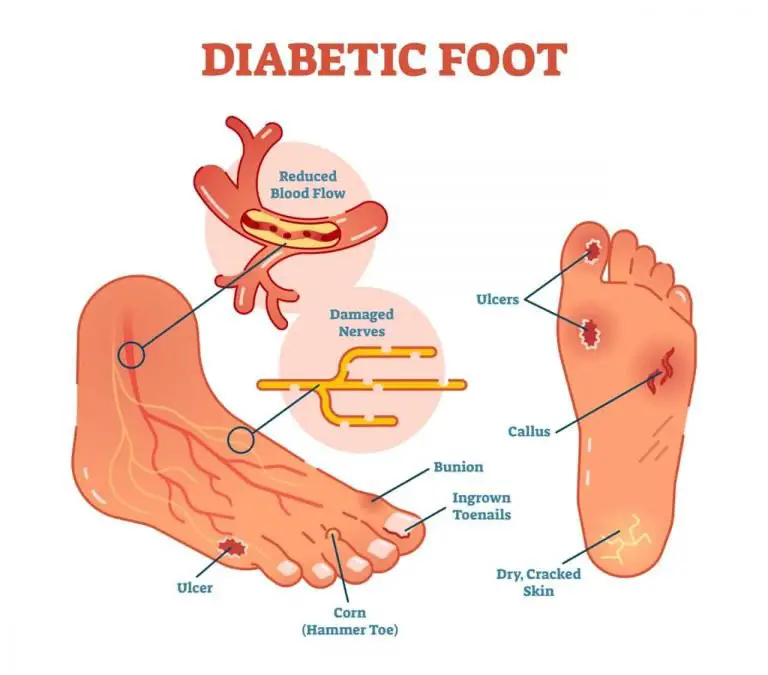The Above Policy Is Based On The Following References:
Does Medicare Cover Diabetic Supplies
Did you know Medicare beneficiaries are eligible to receive coverage for diabetic supplies they use every day? Medicare can cover a range of prediabetic and diabetic supplies and services, including diabetic shoes and individual health coaching through the Medicare Diabetes Prevention Program. Read on to see what diabetic supplies are covered by specific Medicare Parts and how the Medicare Diabetes Prevention Program works.
Does Medicare Cover Routine Foot Care
Medicare does not cover routine foot care because those services are rarely considered medically necessary. Routine treatments include nail care, hygienic services and treatment of corns and calluses. Routine care can be beneficial to your health, but it is typically considered to be preventive.
However, there are some conditions that might make routine foot care a medically necessary service, which then qualifies you for coverage. These conditions include alcoholism, pernicious anemia, Buergers disease and other ailments that can severely affect your feet. Most diseases that affect the metabolic, neurologic or vascular systems could also make routine foot care medically necessary.
Check with your doctor or health care provider if you think you have a condition that might impact your feet enough to deem routine care medically necessary.
Don’t Miss: Is Cobra Creditable Coverage For Medicare
How Often Does Medicare Pay For Diabetic Foot Care
Part B will cover podiatry for the treatment of nerve damage due to diabetes. Further, Medicare will pay for diabetic foot care every six months.
A prime example of diabetic foot care is diabetic peripheral neuropathy. But this only applies if you havent seen another foot care physician between your visits. Part B can also help pay for diabetic shoes.
Does Medicare Pay For Foot Surgery

As there is no Medicare item number for a podiatric surgeons services or the associated anaesthetists service, it is not mandatory for a health fund to pay benefits from their hospital tables for these medical costs. Medicare will not provide a benefit toward the surgeon and anaesthetists fees.
You May Like: Do Husband And Wife Pay Separate Medicare Premiums
What Diabetic Shoes Will Medicare Cover
Medicare allows one pair of extra-depth shoes and one pair of custom-molded shoes per calendar year. Also, Medicare covers up to five pairs of inserts each calendar year.
If the doctor or supplier submitting the claims for your diabetic shoes and/or inserts doesnt accept Medicare, Medicare wont pay the claims. You should always contact your supplier to make sure they participate in Medicare beforehand. If the supplier participates in Medicare, they accept Medicare assignment. Remember, if the supplier doesnt accept Medicare, they control how much they can charge you.
License For Use Of Physicians’ Current Procedural Terminology Fourth Edition
End User Point and Click Amendment:CPT codes, descriptions and other data only are copyright 2021 American Medical Association. American Medical Association. All Rights Reserved . CPT is a trademark of the American Medical Association .
You, your employees and agents are authorized to use CPT only as contained in the following authorized materials of CMS internally within your organization within the United States for the sole use by yourself, employees and agents. Use is limited to use in Medicare, Medicaid or other programs administered by the Centers for Medicare and Medicaid Services . You agree to take all necessary steps to insure that your employees and agents abide by the terms of this agreement.
Any use not authorized herein is prohibited, including by way of illustration and not by way of limitation, making copies of CPT for resale and/or license, transferring copies of CPT to any party not bound by this agreement, creating any modified or derivative work of CPT, or making any commercial use of CPT. License to use CPT for any use not authorized herein must be obtained through the AMA, CPT Intellectual Property Services, AMA Plaza, 330 Wabash Ave., Suite 39300, Chicago, IL 60611-5885. Applications are available at the AMA Web site, .
Recommended Reading: Does Medicare Cover Cosmetic Surgery
Does Medicare Cover Podiatry For Diabetics
Medicare Part B may cover a foot exam every six months if you have nerve damage related to diabetes. If youve had a podiatry exam for a different foot problem anytime during the past six months, Medicare might not cover a foot exam.
Medicare might cover podiatry services more frequently in certain situations, such as:
- You had an amputation of all or part of your foot, and it was not because of an injury.
- Your foot or feet have changed in appearance, signaling that you might have a foot disease.
Nerve Supply To The Feet
Nerves are the wiring of the body. They carry messages to your brain from the rest of your body. The nerves to your feet are the most likely to be affected by diabetes.Damaged nerves can cause painful, numb or insensitive feet. Minor cuts, blisters or burns may not be felt and ulcers can develop, which you may not be aware of. Some people with neuropathy experience uncomfortable sensations such as burning, tingling and pain. This is often worse at night.It is important to remember that many people with nerve damage have no symptoms and are unaware of the problem. Nevertheless, they are still at risk of developing ulcers.
Recommended Reading: How Do I Sign Up For Medicare Supplemental Insurance
Medicare Covers Foot Care For Diabetes
If you have diabetes-related lower leg nerve damage that may increase the risk of limb loss, Medicare will cover an annual foot exam as well as treatment for foot ulcers, and toenail management, based on your foot exam results.
Medicare also covers the fitting and furnishing of a pair of custom-molded shoes or a pair of extra-depth shoes once per calendar year.
How Often Should I Have A Diabetic Foot Exam
According to the National Institute of Diabetes and Digestive and Kidney Diseases , you should visit your doctor once a year for a diabetic foot exam, or more often if you have foot problems. During the diabetic foot exam, have your physician check for adequate blood flow and for any sign of loss of feeling in your feet.
Please note that according to the NIDDK, smoking can narrow and harden the blood vessels that deliver oxygen and nutrients to your nerves, and nerve damage and decreased blood flow can cause major foot problems. Thus, diabetes and smoking are not a good mix. Please see this article about smoking cessation if you need help quitting. To keep your feet healthy, the NIDDK recommends keeping your blood glucose numbers close to the target you and your doctor have set, and making sure to check your feet every day for problems.
Recommended Reading: Are Medicare Advantage Premiums Deducted From Social Security
How Do I Qualify For These Benefits And What Rules Apply
Your condition needs to be under treatment by a physician to qualify for coverage. Your healthcare provider will need to show documentation that youre receiving treatment for a condition that requires foot care. Youll need to be receiving active care for 6 months for that condition for Medicare to begin paying.
Make sure youre enrolled in either Medicare Part B or a Medicare Advantage plan. Medicare Part A only covers hospital and long-term care expenses. Your podiatrist or other foot care provider will need to be enrolled in Medicare and accept assignment. If youre using a Medicare Advantage plan, you might need to use a provider whos in your plans network.
Your costs will depend on whether you have original Medicare or a Medicare Advantage plan.
What Podiatry Services Are Covered By Medicare

Overall, yes, Medicare does cover podiatry services. But there are some nuances to ensuring that you qualify for Medicare coverage of your foot treatment. In some instances, you may need to be officially diagnosed with a condition or other qualifying reason to use your Medicare insurance for podiatry services. If you do have a medical need or condition that qualifies, and the service you need is one that Medicare typically covers, youll have a much lower chance of having your claim denied for the podiatry services youre trying to get.
According to foot care information on the Medicare website, Medicare Part B will cover yearly exams and treatment for the feet, for people who have diabetes-related nerve damage. These same kinds of services will also be covered for people who have medically necessary treatment requirements for diseases and injuries of the feet. These problems include, but arent specifically limited to, bunion deformities, hammer toe, and heel spurs, along with other similar types of problems.
One thing Medicare doesnt cover is supportive devices like orthopedic shoes. These types of devices will only be covered when included in the price of a leg brace, or when the patient is diabetic. There are a lot of things that can go wrong with peoples feet when they have diabetes, which is one of the main reasons its a more thoroughly covered health condition under Medicare podiatry services.
Read Also: Does Medicare Cover Wheelchair Repairs
Does Medicare Cover Podiatry For Toenail Fungus
Medicare will cover treatment for fungus within your toenail. Another term for this treatment is nail debridement. To be eligible, you must have severe, debilitating pain.
Evidence of several infections caused by the fungus may also qualify you. Nail debridement can take place in your doctors office and will fall under Part B.
Routine Foot Care Cpt G0245 G0246 G0247
by Medicalbilling4u |
Medicare Benefit Policy Manual, From the Medicare Benefit Policy Manual, Pub. 100-02, Chapter 15, Section 290:Excluded Foot-Care Services
- Treatment of Subluxation of Foot
Exceptions to Routine Foot-Care Exclusions
- Necessary and Integral Part of Otherwise Covered Services
- Treatment of Warts on Foot
- Mycotic Nails
- Foot-Care Services for Patients with Diabetic Sensory Neuropathy and LOPS
Medicare National Coverage Determinations Manual,G0245
- The diagnosis of LOPS.
- Evaluation of foot structure and biomechanics.
- Evaluation of vascular status and skin integrity.
- Evaluation and recommendation of footwear.
- Patient education.
G0247
- Local care of superficial wounds.
- Debridement of corns and calluses.
- Trimming and debridement of nails.
who do not meet the class findings Limitations:Notice: 13.5.1,
- Safe and effective.
- Not experimental or investigational .
- Appropriate, including the duration and frequency that is considered appropriate for the service, in terms of whether it is:
- Furnished in accordance with accepted standards of medical practice for the diagnosis or treatment of the patients condition or to improve the function of a malformed body member.
- Furnished in a setting appropriate to the patients medical needs and condition.
- Ordered and furnished by qualified personnel.
- One that meets, but does not exceed, the patients medical need.
- At least as beneficial as an existing and available medically appropriate alternative.
Bill Type CodesRevenue Codes
Read Also: When Can You Get Medicare Health Insurance
Does Medicare Advantage Cover More Foot Care
Even though Medicare will not cover routine foot care in most cases, taking care of your feet is important to your overall health, and it can prevent problems that could negatively affect your quality of life.
Your doctor may recommend services that Original Medicare doesnt cover. A Medicare Advantage plan, also known as Part C, may offer extra coverage for routine foot care.
Advantage plans cover everything included in Original Medicare on top of additional benefits. If you are interested in more foot care coverage, check for a plan that includes these services.
Finding A Specific Code
Some articles contain a large number of codes. If you are looking for a specific code, use your browser’s Find function to quickly locate the code in the article. Sometimes, a large group can make scrolling thru a document unwieldy. You can collapse such groups by clicking on the group header to make navigation easier. However, please note that once a group is collapsed, the browser Find function will not find codes in that group.
Read Also: Will Medicare Pay For A Medical Alert Necklace
Keep The Blood Flowing To Your Feet
Try the following tips to improve blood flow to your feet:
- Put your feet up when you are sitting.
- Wiggle your toes for a few minutes throughout the day. Move your ankles up and down and in and out to help blood flow in your feet and legs.
- Do not wear tight socks or elastic stockings. Do not try to hold up loose socks with rubber bands.
- Be more physically active. Choose activities that are easy on your feet, such as walking, dancing, yoga or stretching, swimming, or bike riding.
- Stop smoking.
Smoking can lower the amount of blood flow to your feet. If you smoke, ask for help to stop. You can get help by calling the national quitline at 1-800-QUITNOW or 1-800-784-8669. For tips on quitting, go to SmokeFree.gov.
How Do Elderly Trim Their Toenails
Keep things neat and tidy. Toenails should be kept fairly short. The longer they are, the more you risk them breaking, snagging on clothing, or scratching skin open accidentally. Using nail clippers, clip them down carefully and then file them to a smooth curve using a nail file.
Also Check: Is Xarelto Covered By Medicare Part D
Does Medicare Cover Hammertoe Surgery
Medicare will generally cover Hammertoe surgical procedures. But your doctor must decide that its necessary for your health. Hammertoe can cause severe pain and can affect the health of your foot.
If you have significant pain or balance issues, you may qualify for hammertoe surgery. On average, hammertoe surgery costs over $9,000 without insurance.
Does Medicare Part C Cover More Foot Care

You might have additional foot care coverage depending on your or Medicare Advantage, plan. Medicare Advantage plans are required to cover all of the same services as parts A and B.
In many cases, Medicare Advantage plans offer additional coverage, which could include routine foot care. Check with your plan for specific coverage details before you go to your foot care appointment.
Also Check: What Age Does Medicare Take Effect
How Often Does Medicare Cover A Diabetic Foot Exam
If you have diabetes, diabetic neuropathy, and loss of protective sensation in your foot, Medicare Part B covers one diabetic foot exam every six months, provided you have not been treated by a foot care specialist for another condition between exams. If you go to a Medicare-assigned doctors office for a diabetic foot exam, you pay 20% of the allowable charges plus any applicable Part B deductible. If you see a specialist in an outpatient hospital clinic, you are usually responsible for a copayment.
Original Medicare, which includes Part A and Part B , does not cover routine podiatry services . But, medically necessary treatment of foot deformities or injuries such as bunions and hammertoes may be covered at 80% of any allowable charges .
Some people choose an alternate way to receive their Medicare benefits through a Medicare Advantage plan. These plans must cover the same services as Original Medicare , but in many cases, they provide additional benefits including prescription drug coverage, routine vision and dental care, and may even offer podiatry services. Please check the Medicare Advantage plan details as benefits may vary. Please also note that youll still need to pay your Medicare Part B premium, as well as any Medicare Advantage plan premium, along with deductibles, copayments, and coinsurance.
For more information about diabetes foot exams, please see:
New To Medicare?
The Importance Of Podiatry For Diabetics
Of the many additional components of health care required by diabetics, podiatry positively falls on the list. But what does Medicare cover in terms of podiatry?
The first thing to establish is how vital podiatry is for those suffering diabetes.
According to the National Institute of Diabetes and Digestive and Kidney Diseases, 60 to 70 percent of diabetics generate whats known as diabetic neuropathy. This is a type of nerve damage caused by high blood sugar levels. There are three types of diabetic neuropathy, including peripheral neuropathy, autonomic neuropathy and focal neuropathy.
Peripheral neuropathy involves damage to the peripheral nerves, as the name implies. This typically leads to numbness and pain in the hands and feet. The most common cause of peripheral neuropathy is diabetes mellitus.
Autonomic neuropathy is a group of symptoms that involves damage to nerves associated with the spinal cord and brain. This is associated with alcohol abuse, nerve inflammation disorders and other conditions, along with diabetes. There are a number of symptoms, ranging from constipation to diarrhea and other digestive problems. Bladder issues, heart rate problems and urinary problems are also associated with autonomic neuropathy.
In terms of Medicare-covered podiatry, the general rule of thumb is that only medically necessary and reasonable foot care is comprised.
In essence, this sort of preventative podiatry care is definitely medically necessary.
Read Also: Do I Need To Pay For Medicare
